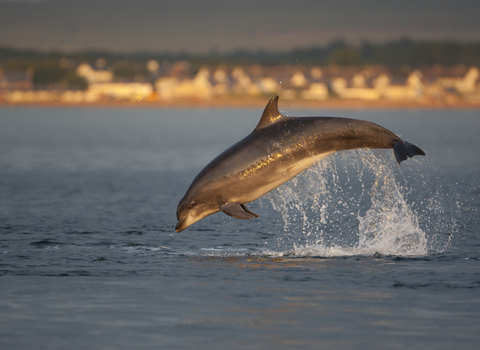We organised an online Wildlife Matters LIVE event to discuss what we know about them, the threats that they face and how we can all help. Chaired by Chief Executive Carolyn Cadman, the panel included Cornwall Wildlife Trust’s Marine Conservation Officer Abby Crosby, founder of Cornwall Dolphin Group Nick Tregenza, as well as Shauna Corr and Saskia Duncan – both of whom have completed research on the South West’s pod of Bottlenose Dolphins as part of the South West Bottlenose Dolphin Consortium.
If you’d like to watch the Wildlife Matters event yourself, you can find the recording below. Or if you’re short on time, read our blog and hear about six key things we learnt at the event.

